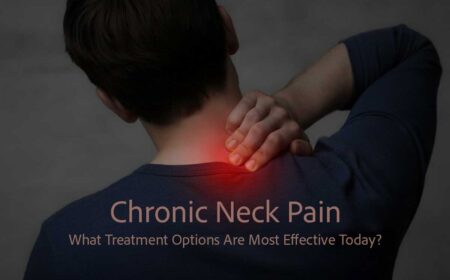Living with chronic pain can be an overwhelming and exhausting thing to have to do, and it will affect every single aspect of your life, from simple daily chores to your overall emotional happiness and well-being. Whether it was brought on by an underlying condition, or perhaps an accident where negligence was involved (if that’s the case, it may be worth reaching out to a personal injury attorney in Nashville or elsewhere to make a claim for compensation) chronic pain can drastically alter your quality of life.
This sounds like a terrible situation to be in, and, of course, it’s certainly not positive. However, the good news is there are ways you can deal with chronic pain that, although they won’t entirely heal it, will make it easier to manage. If that sounds like something you need to try, keep reading to find out more and discover some strategies for dealing with chronic pain that you might not have thought about before.
Physical Therapy
Physical therapy can be a hugely effective option for anyone suffering from chronic pain. It’s a special therapy that improves physical function and reduces pain by making your body work correctly.
This can be done through carefully designed and highly targeted exercises, manual manipulation, and teaching so patients can help themselves even when not in a physical therapy session.
The best thing about physical therapy is to find a practitioner who will create a personalized treatment plan for you, rather than someone who just uses off-the-shelf ideas that don’t necessarily apply to you. Ideally, the outcome will be better mobility, more flexibility, and reduced pain.
Red Light Therapy
Red light therapy is a popular way to deal with chronic pain in a non-invasive and drug-free way, so it’s no wonder that many people are trying it for themselves. It works by exposing the body to a low-level red light that penetrates beneath the skin and makes cells grow and work correctly.
One of the outcomes of this is that you’ll get better circulation and reduced inflammation, and your tissues will be able to be repaired much more easily.
All of this can help to reduce your chronic pain by reducing the swelling in your body and making healing happen faster.
On top of this, red light therapy makes your body produce endorphins, known as feel-good hormones, which are natural pain-relievers (and make you feel great as well).
Something very useful about red light therapy for pain management is that it is highly versatile, meaning it can be used on almost every area of the body, like your joints, muscles, and even nerves. This means it can treat all chronic pain, regardless of where or what’s causing it.
Meditation
Although it won’t be the right thing for everyone, meditation can be a great method of reducing chronic pain if you want to try it. Meditation is all about creating a focused mind and being relaxed, and if your body is relaxed it can make your chronic pain feel much less of an issue.
You’ll be less tense when you meditate, which means your muscles won’t be so tight (which can increase your pain). Meditation can also be part of being more mindful, and this has been known to allow people to become more resistant to pain.
In other words, mindfulness can help you feel pain differently and ensure it becomes a much smaller issue – it might not be gone and you might not be cured, but you will feel better about the situation, and it won’t affect you quite so much.
Meditation also means you’ll have a more positive mindset, and many studies have shown that this can benefit patients and reduce pain. The more positive you are, the less you’ll hurt.
Of course, as stated before, this is all subjective to the individual, and it might be that meditation can be one of the tools against chronic pain – rather than something that works fantastically all by itself.
Support Groups
Support groups can be a vital way for people with chronic pain to feel better, and they can offer plenty of advice about coping with pain, even if that pain doesn’t reduce as a result.
Connecting with other people who are going through the same thing and understanding what you are dealing with can help you feel better in general and make you know you’re not alone.
You’ll be able to express your feelings, talk about frustrations, and celebrate small wins with your support group, which is not something you might be able to do outside of it – other people who don’t have chronic pain might mean well. However, they still won’t entirely understand what you have to deal with daily.
When you share experiences and listen to other people talk about theirs, you can feel like you belong, and you’ll feel a lot less isolated (which is a feeling that often comes with chronic pain).
That’s a great start, but you’ll also be able to pick up tips and useful advice about coping techniques, alternative therapies, and much more. Even though you might not want or need to try all the ideas, having a new, positive way of thinking can make a big difference.
Medication
Of course, there is an obvious way to cope with chronic pain, but it’s not something everyone is going to want to try; medication.
There are so many types of medication around these days that it can feel overwhelming, and you should never try to self-medicate when it comes to chronic pain as you won’t know what will work best for you and you won’t know what dosage to take – too much is highly dangerous and too little won’t have any effect, making you feel down because nothing seems to be working.
If you feel that medication is a good option for you, it’s wise to speak to a healthcare professional for advice. They’ll ask the right questions to get to the heart of the matter and determine precisely what medication and how much of it is going to be best for you.
Only ever do what your doctor tells you and follow the prescription to the letter. If you don’t think it’s working, go back to your doctor, and don’t try to work out a new dose for yourself as this could lead to more health problems.






